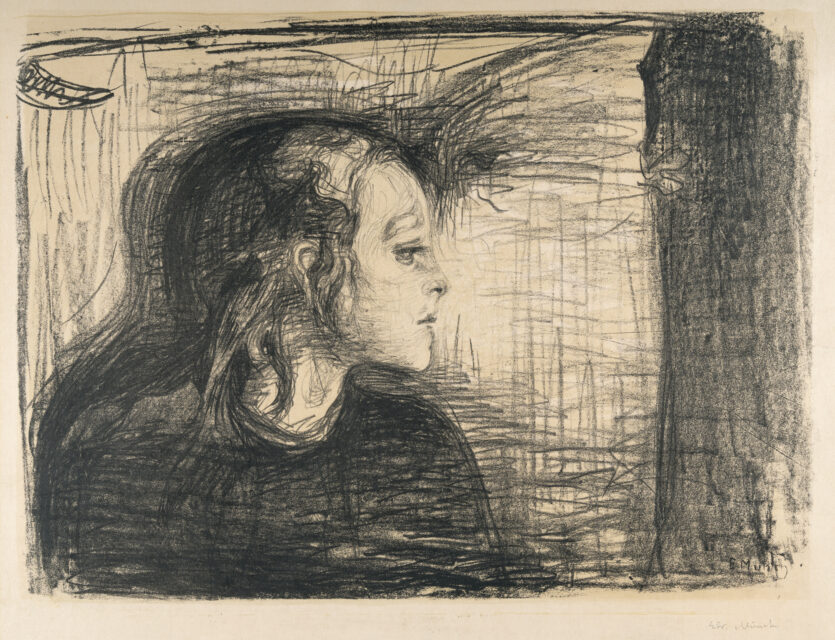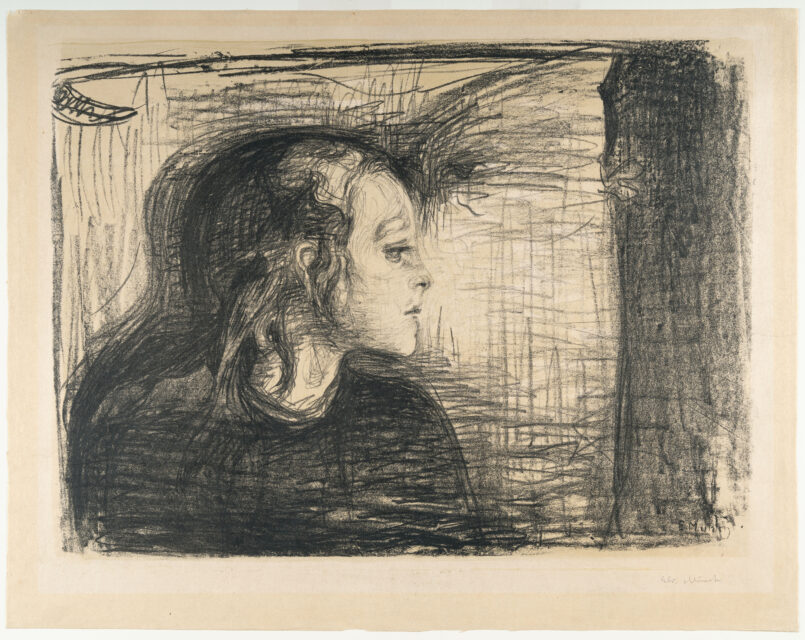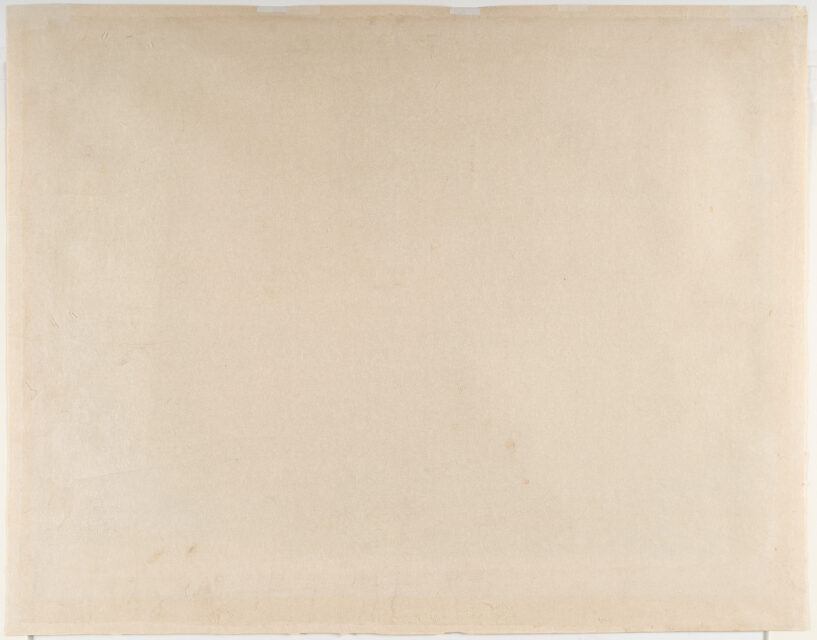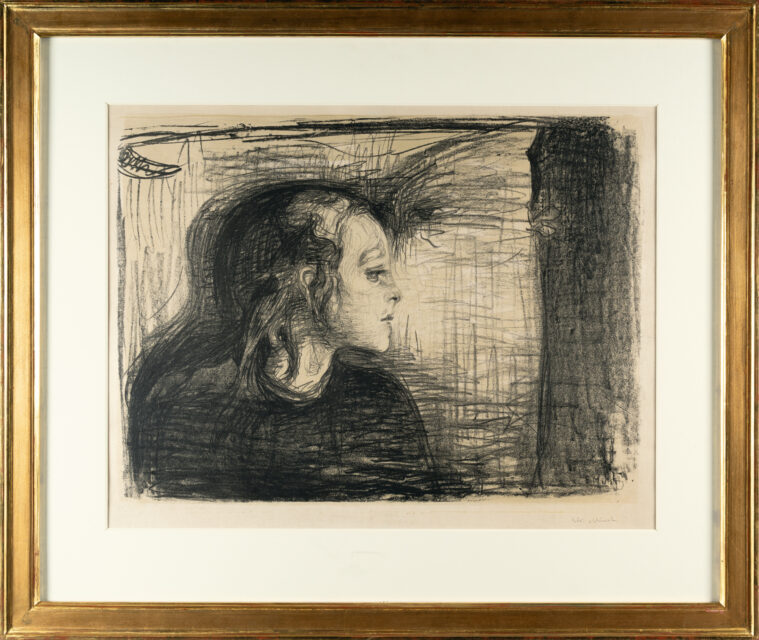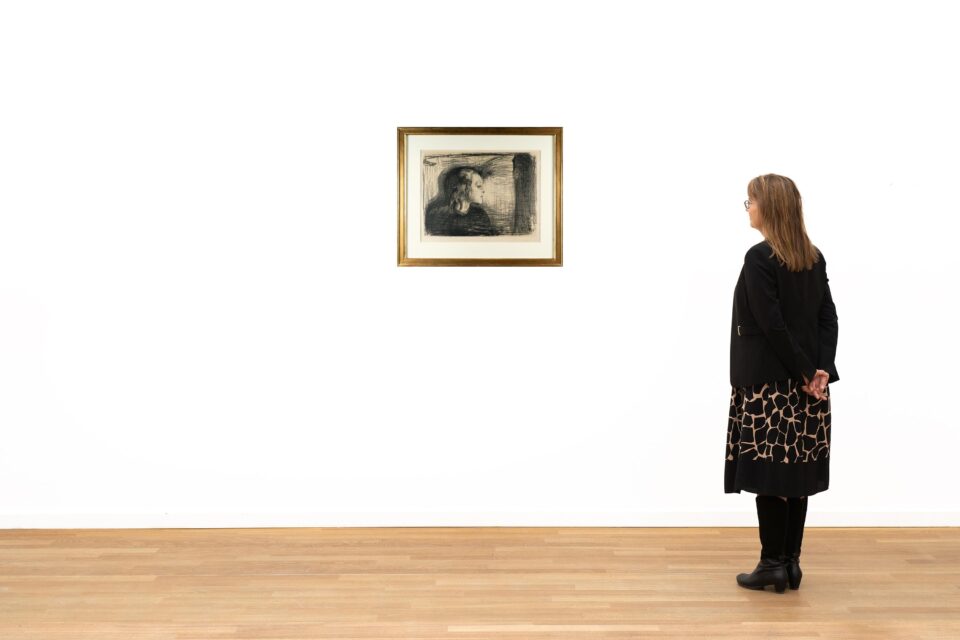Det syke barn I (The sick child I or The sick girl I)
Details
Provenance:
Grev Wedels Plass Auksjoner, The Annual Norwegian Edvard Munch Sale, Oslo 27.11.2001, lot 25;
Private collection, Northern Germany;
Private collection, Norway.
Descrizione
– “The Sick Child” is one of Edvard Munch’s most important motifs: he produced six paintings and three prints on this theme
– The lithograph “The Sick Child”, created in 1896, is one of his most important graphic works and an icon of European printmaking around 1900
– Edvard Munch is considered an important pioneer of Expressionism and in particular of Expressionist printmaking
The motif of the sick child is typical of the 1880s, but Munch’s haunting style of depiction is something completely new. Experiences of illness and death in early childhood characterised Munch’s overall life. He was only five years old when his mother died of tuberculosis; his sister Sophie followed just a few years later. The motif of the sick child thus became Munch’s most important subject, which he depicted in a total of six paintings and three different prints between 1885 and 1927. Looking back, Munch wrote: “As far as ‘The Sick Child’ is concerned, we were in what I call the ‘cushion era’. There were many painters who painted sick children leaning against pillows. But it’s not the motif that made up my ‘Sick Child’. (…) I maintain (…) that hardly any of these painters (…) lived through their subject to the last cry of pain like I did.” (quoted from Uwe M. Schneede, Edvard Munch. Das kranke Kind, Frankfurt/Main 1987, p. 19).
The first version of the painting was created in the winter of 1885/86 after a three-week trip to Paris. Deeply impressed by the works of the Symbolists, Munch left behind the realism of his early works and found his way to a simplified formal language that enabled an expressive heightening of expression. The work was exhibited publicly for the first time in Oslo in 1886. Visitors and critics alike were appalled and outraged – particularly by the coarse painting style with deep scratch marks and rubbed, seemingly unfinished areas, which clearly reveal Munch’s difficult artistic struggle. “No painting has caused so much offence in Norway,” Munch later said. At his solo exhibition in Berlin in 1892, “The Sick Child” also caused a major scandal, which led to the founding of the Berlin Secession and ultimately marked the start of modernism. Although the exhibition was closed again after just seven days due to the strong protests, it nevertheless signalled Munch’s artistic breakthrough. Today, Edvard Munch is regarded as an important pioneer of Expressionism.
The lithograph “The Sick Child” offered here was created in 1896 and is the third print on this theme. Munch reduced the motif to the girl’s head turned sideways, with the supporting white cushion taking up almost the overall background. In this way, he focusses on the girl’s strongly moving gaze, which is directed into the void, and creates a particularly haunting pictorial statement. Munch uses a total of six lithographic stones to print different colour combinations. Our version was printed with the main stone in black and two coloured stones in blue and yellow, although the blue colour has faded noticeably in almost all copies and is only recognisable as a faint green tone when mixed with the yellow. For Munch, printmaking is an integral part of his oeuvre. He is personally present during the printing process and constantly influences the result. He said: “The painter must continue his work during the printing process (…) sheets that are printed without the presence of the artist are not original prints.” (quoted from: Gerd Woll, WVZ, Munich 2001, p. 23).
* Tutte le informazioni includono la commissione a carico dell'acquirente (27%) senza IVA e senza garanzia. Salvo errori.
** Tutte le informazioni più la commissione a carico dell'acquirente e l'IVA e senza garanzia. Salvo errori.
*** Con riserva: L'offerta è stata accettata al di sotto del limite. L'acquisizione dell'opera potrebbe essere ancora possibile nella nostra vendita post-asta.
R = Le opere d'arte regolarmente tassate
N = Opere d'arte soggette a tassazione differenziata e provenienti da un paese non UE
Non è consentita la riproduzione e la distribuzione privata o commerciale di tutte le illustrazioni delle opere esposte nell'archivio della mostra e dell'asta. Tutti i diritti riservati.


